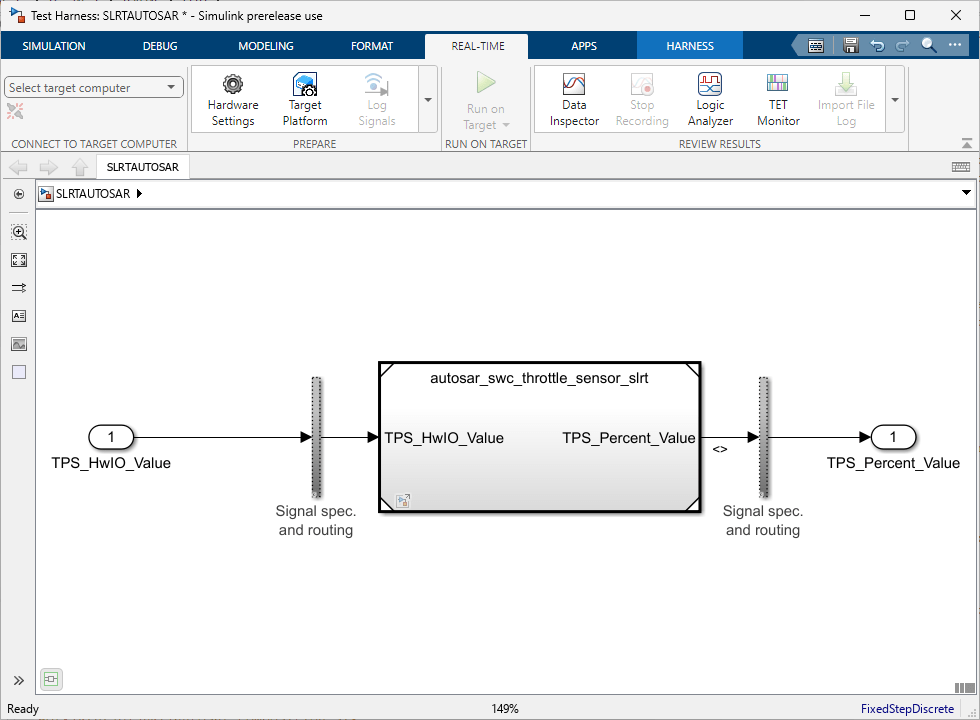autosar.slrealtime.migrateModel
Migrate AUTOSAR component models to Simulink Real-Time for rapid-prototyping and real-time simulation
Since R2024b
Description
slrtModelName = autosar.slrealtime.migrateModel(autosarModel,outputDirectory,Name=Value)autosarModel deployed in a test harness, and
saved in a specified location, outputDirectory.
This function supports only AUTOSAR Blockset Classic platform component models.
For more information regarding rapid-prototyping and simulation for AUTOSAR Adaptive models, see Configure AUTOSAR Adaptive Model for External Mode Simulation.
Examples
Input Arguments
Name-Value Arguments
Output Arguments
Limitations
Export function AUTOSAR models with global Simulink functions are not supported.
Simulink does not support Data Store Memory blocks that are accessed by multiple functions that have different rates, which may impact some Basic Software workflows.
Models that have an AUTOSAR Adaptive platform are not supported.
More About
Version History
Introduced in R2024b
See Also
Apps
- Simulink Real-Time (Simulink Real-Time) | Simulink Real-Time Explorer (Simulink Real-Time) | AUTOSAR Component Designer
